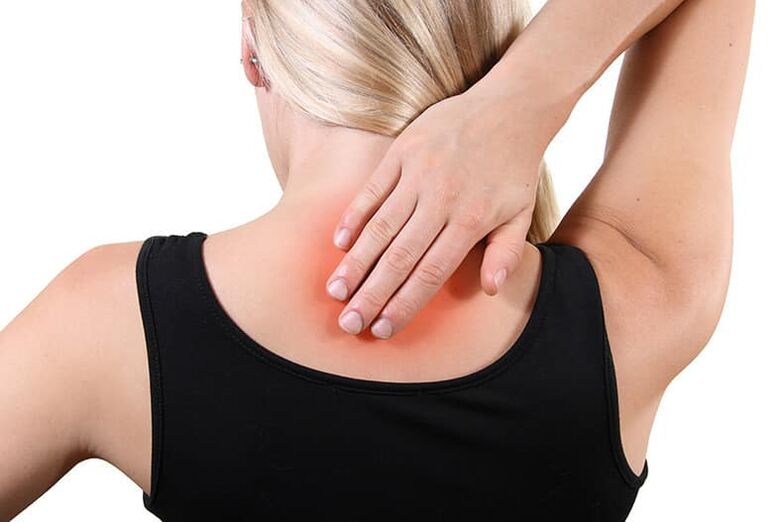Spinal disorders can be very uncomfortable. If they affect the cervical spine, there are chances of complications in the spinal cord and brain. Osteochondrosis of the cervical spine often leads to headaches, dysfunction of internal organs, and circulatory disorders.
Doctors divide the development of cervical osteochondrosis into three stages. In the first and second stages, degenerative-dystrophic changes in the intervertebral discs (drying out, flattening) occur. In this case, the structure of the hard drives themselves does not change.

In the early stages, the symptoms of the disease are just beginning to appear. In the second phase, its manifestation is more specific, while it is aggravated by head movements, severe fatigue, and stress. The third stage is the appearance of pathological processes of the intervertebral disc (osteophytes), a rupture of the fibrous ring is observed, which leads to the prolapse of the nucleus of the intervertebral disc and, as a result, to the formation of a hernia. guides the cervical spine. At the third stage, the pain is observed continuously, while the movements of the head and shoulders are difficult, the person is unable to perform the usual household operations.
Symptoms
One of the main symptoms of cervical spine osteochondrosis is pain in the neck caused by pinching or inflammation of the nerve roots. The pain usually radiates to the neck area, shoulder, forearm and under the shoulder blade. The pain can spread to the left or right hand and cause some fingers to become numb.
In addition to pain, cervical osteochondrosis is characterized by:
- Dizziness,
- "Flies" before the eyes,
- hard of hearing
- decreased memory
- Headache localized in the back of the head and temples.
If the disease lasts for several years, vascular atherosclerosis and circulatory encephalopathy (a serious decrease in mental performance) may also occur.
When making a circular head movement, a patient with cervical osteochondrosis usually hears a characteristic crunch.
The reasons
The main cause of cervical osteochondrosis is incorrect posture while sitting. In addition, symptoms of this disease can easily occur during daily work at a forward tilt, during construction and repair work with the head thrown back. This is because excessive strain on the neck can change the structure of the cartilage tissue, which can lead to pathological changes in the intervertebral discs. In addition, the reasons for the development of cervical osteochondrosis can be a violation of calcium metabolism in the body, hereditary factors, trauma, severe hypothermia and increased exercise.
treatment
Complete healing and prevention of the new development of osteochondrosis of the cervical spine is only possible through a complete change in lifestyle, constant prophylaxis and spa treatment. In practice, only a few achieve this.
In the first stage of the development of osteochondrosis, the patient is usually helped by conservative non-drug treatment. At the same time, it is necessary to correct the posture, pay more attention to the correct equipment of the workplace and often interrupt for simple physiotherapeutic exercises. Swimming, increased physical activity and the intake of vitamin and mineral complexes can have a positive effect on the entire musculoskeletal system.
If treatment was started in the second or third stage of the disease, the main task is to relieve pain. In advanced cases, surgical methods of treatment to stabilize the damaged vertebrae can be prescribed, but such cases are individual and modern physiotherapy often helps to avoid it.
Physiotherapeutic methods
In cases when drug therapy is contraindicated or has not shown the necessary positive effect, the methods of physical therapy of classical and alternative medicine are used in the treatment of cervical osteochondrosis. Primarily, they aim to get rid of muscle spasms, inflammation, and pain.
Reflexology.The essence of the method is to stimulate biologically active points by inserting special thin needles into them to a certain depth. The procedure is painful and helps relieve pain in the spine. A complete reflexology massage consists of several sessions.
Massage.The classic way to get rid of muscle pain and improve blood circulation.
Shock wave therapy (SWT).It is able to restore blood flow and eliminate osteophytes, restore the normal structure of cartilage tissue. The positive effect is observed after 1-2 sessions. The process of shock wave therapy usually includes up to ten interventions and can be prescribed as part of a complex therapy.
Physical therapy.A series of targeted daily exercises will help strengthen the muscles of the cervical spine, which in turn can reduce the stress on that area. Exercise therapy is indicated at all stages of illness, as well as as a preventive measure. A number of such exercises can include:
- Turns of the head to the sides;
- Head leans forward and backward;
- Lifting of the shoulders;
- alternating tension in the flexors and extensors of the neck with the head in a stationary position.
Exercises need to be repeated 5-7 times. The duration of the lesson is 15-20 minutes.
The exercise set is always selected by physiotherapists, taking into account the specifics of the disease and the patient's condition.
Food and lifestyle. Both during conservative treatment and after surgery, it is recommended to eat foods rich in calcium and vitamins, correct habitual postures and postures in general, orthopedic pillows and a mattress.
prevention
To avoid hypothermia and infectious diseases, it is necessary to stay in one position at the computer for longer. If you are going on a long trip, use a neck support pillow, which can reduce muscle tension. For daily sleep, it is recommended to use orthopedic pillows and a mattress that can ensure the correct position of the head.




















